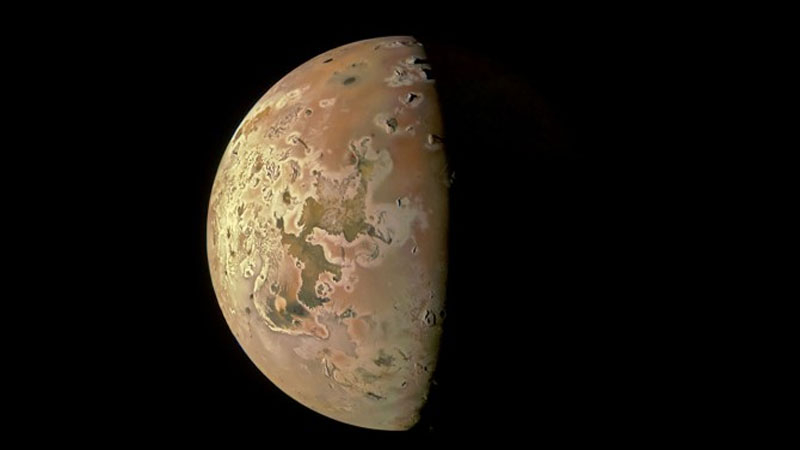Cornell University researchers were able to study a fundamental process of planet formation and evolution—tidal heating—by observing volcanoes in the solar system’s most volcanically active body, Jupiter’s moon Io. This is not idle interest. Similar phenomena occur in the depths of the global oceans of a number of other moons near Saturn and Jupiter, and this is a chance for the emergence there of life, which we know from Earth.

Jupiter’s moon Io. Image source: NASA
The close location of Io to Jupiter, as well as the passages of relatively nearby other satellites of this giant planet, crush and stretch the bowels of Io by tidal gravity. As a result of stress and friction, Io’s interior is extremely hot, and the geology of this moon is actively volcanic. At the same time, up to five thousand volcanoes are active on the surface of the satellite, and new volcanoes are forming there even today. To some extent, volcanic activity regulates the internal heat of the satellite and also serves as an indicator of this process.
In recent years, data on Io’s volcanoes has been regularly supplied by NASA’s Juno probe. It has also become possible to take highly detailed images of Io directly from Earth, which provides a wealth of data for analysis. The work of astronomers from Cornell University helped systematize the data accumulated on Io’s volcanoes and allowed us to draw interesting conclusions.
Thus, scientists discovered previously unknown volcanic activity in the polar regions of the satellite, whereas previously the main contribution to the heat balance of the planet was thought to be made by volcanoes in the equatorial region. Moreover, scientists have detected clearly synchronous work in groups of polar volcanoes, which simultaneously flared up and died out. “They all became bright and then dimmed at the same rate,” the scientists say. “It’s interesting to watch volcanoes and how they react to each other.”
«Studying the inhospitable landscape of Io’s volcanoes really inspires science in the search for life, the scientists explained their main goal. — Tidal heating plays an important role in the heating and evolution of the orbits of celestial bodies. It provides the heat needed to form and maintain subsurface oceans on the moons of giant planets such as Jupiter and Saturn.”